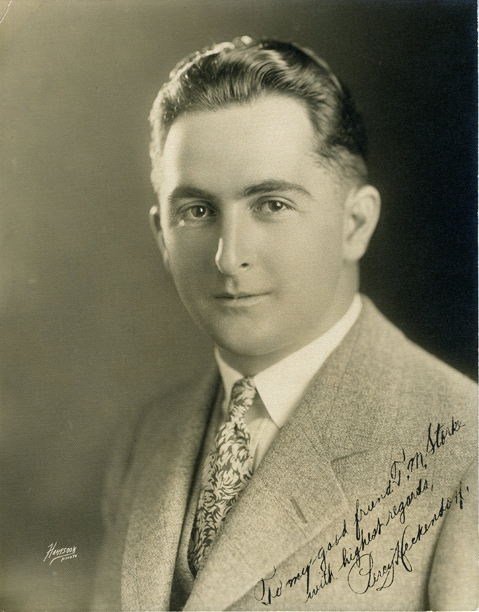Percy Heckendorf: Prosecuted Chief of Police for Corruption
And the Mayor for Extorting Money from City Employees
Percy Heckendorf was Santa Barbara County District Attorney from 1931-1942, one of the longest terms in county history. He then went on to a distinguished career in state government before returning to Santa Barbara, where he was appointed a Superior Court judge in 1960.
Heckendorf was born in Santa Rosa in 1898. In 1908 the family came to Santa Barbara where young Percy finished up his elementary and high school education. He received his BA from Stanford University in 1923 and earned his law degree there in 1926. After admittance to the California Bar, he returned to Santa Barbara and joined the firm of Heaney, Price & Postel, which today as Price, Postel & Parma is the oldest law firm in Santa Barbara.

Heckendorf secured his first term as DA in the November 1930 election and would go on to two more terms. Elected at the height of the Great Depression, he was forced to operate the office on a shoestring for several years. His salary of $3,600 was undoubtedly a major cut from his earnings in private practice.
Heckendorf certainly saw his share of interesting cases. One of the most sensational occurred in 1934. In March, one Hazel “Dixie” Ross was arrested for operating a brothel and proceeded to relate that she had been paying protection money to members of the Santa Barbara police force for years, including the chief. In May a grand jury indicted the chief and three officers on corruption charges.
The two-week trial held the city spellbound. Heckendorf was lead prosecutor; one of the defense attorneys was Clarence Ward, a former DA after whom Clarence Ward Memorial Boulevard was later named. Heckendorf had three star witnesses: Ross; Frank “Chico” Larco, an alleged witness to some of the bribes; and one of the indicted officers who turned state’s evidence. It was all to no avail. Ross’s testimony was full of inconsistencies, and it came out that she and Larco had business dealings together. The defense convinced the jury it was all a frame-up; “not guilty” was the verdict.
Heckendorf soon found himself in the middle of another firestorm — the saga of Mayor E. O. Hanson. Elected in 1935, Hanson began his mayoral tenure by firing virtually all city department heads then arranged for the recall of five of the six councilmembers. He pushed city workers to fund his political newspaper with which he waged fierce editorial battles with Tom Storke of the Santa Barbara News-Press. He got into bar brawls, once reportedly pulled a gun on a city official during a dispute, and suggested that the county administration be “cleaned out” just as he had done with the city.
Finally Heckendorf brought charges of corruption over Hanson’s extorting money from city employees for his newspaper. The mayor was given a choice: resign or face a trial. In December 1936 Hanson resigned and soon after left town.
In 1942, Heckendorf left the DA’s office after his appointment by Governor Earl Warren to head California’s primary licensing agency. In 1946 he returned to Santa Barbara and resumed private practice until Governor Edmund “Pat” Brown named him to the Superior Court bench.
Through the years, Heckendorf was also involved in the community. He served on the city council, on the city’s water commission, and was active in seeing completion of the Lake Cachuma project. He retired from the bench in 1968 but continued to periodically hear cases. He was presiding over a murder trial when he suffered the stroke that ultimately took his life early in 1975.



